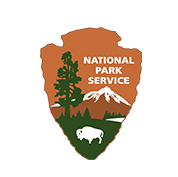Single Publication
Could not determine your location.
2023 - York Fire Burned Area Emergency Response (BAER)
Unit Information
Agency Name: National Park Service

Agency Name: National Park Service

Incident Contacts
How is Burned Area Rehabilitation Funded?
2023 - York Fire Burned Area Emergency Response (BAER)
Publication Type: News 08/25/2023
Ideally, a burned area will recover naturally, but this is not always the case. Human-caused challenges like historic fire suppression and climate change have made natural recovery less likely in many burned areas, including the York Fire footprint. A Burned Area Emergency Response (BAER) team works with land managers to create post-fire restoration treatment plans and identifies sources to fund this work.
Joshua tree woodlands burned in the York Fire are unlikely to recover naturally because they did not evolve in the presence of wildfire. Historic grazing practices have created a fuel bed of grasses and other disturbance-tolerant shrubs on the landscape, which caused the fire to burn more intensely and in a larger area.
Joshua trees are threatened by climate change due to ongoing drought and changing weather patterns in the Mojave Desert. Experiencing a wildfire makes them more susceptible to mortality, especially the Eastern Joshua Tree found in the York Fire footprint. Eastern Joshua Trees branch closer to the ground and are less likely to sprout from their root systems. If an individual Joshua tree has more than 30% of its above-ground material scorched, there is only a 30% chance it will survive.
Mature Joshua trees are a critical resource component on the landscape affected by the York Fire. Raptors like red-tailed hawks perch on the trees while hunting small mammals. Without these perches, raptors may consume fewer rodents, which could have a cascading ecological effect as rodent populations increase. Other animals live in adult Joshua trees and many animals, like the desert tortoise, take shade under them.
The good news is that heavily burned areas are near completely unburned “islands.” This proximity to viable Joshua tree populations means that rodents and other seed distributors will likely carry seeds into the burned areas, creating a potential for natural reproduction and a natural seed source for revegetation projects. However, Joshua trees take around 70 years to mature, meaning that land managers will need to jumpstart and support this natural process.
The federal Bipartisan Infrastructure Law (BIL) designated funding for the post-wildfire program of the Department of the Interior (DOI). Around the time BIL was drafted, large wildfires in the United States like the Dixie Fire had demonstrated the dramatic infrastructure damage that can occur post-fire. This funding provides work opportunities on DOI lands impacted by wildfire. This allows units to achieve post-wildfire land management goals, including extending the time frame for Burned Area Rehabilitation (BAR) projects, as well as the development of plant materials in anticipation of wildfire.
This federal funding will support the restoration of Joshua tree woodlands, including projects like seed collection, nursery-grown Joshua trees, and invasive plant treatments. This funding source allows land managers to respond quickly and effectively to the impact of the York Fire, which will increase the chance that the area will rebound strongly.

 InciWeb
InciWeb